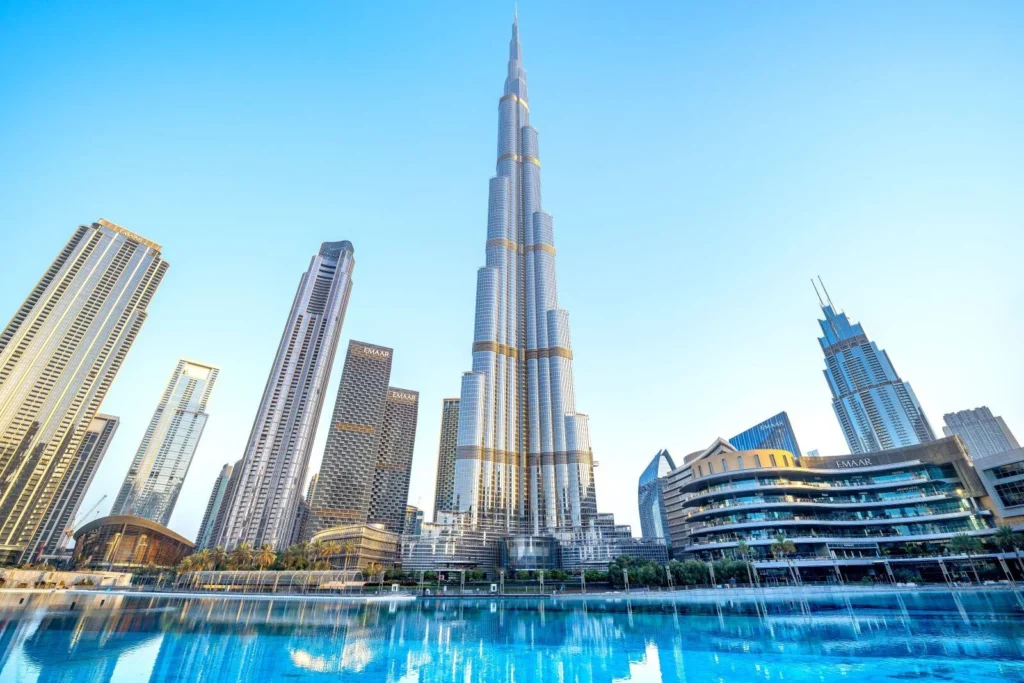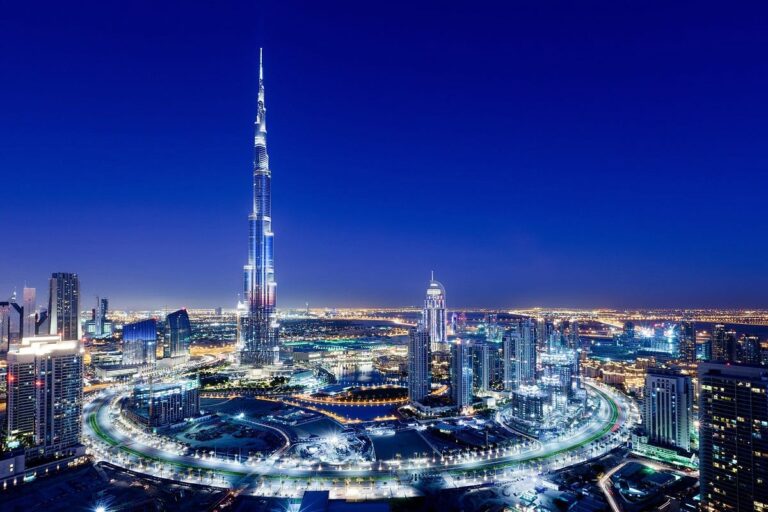Skyscrapers represent our quest to push boundaries, shape city skylines, and reimagine what’s possible in urban development. From the steel giants of the early 20th century to the awe-inspiring modern towers, these architectural marvels symbolize progress, ambition, and resilience. For architecture enthusiasts, travelers, and urban planners alike, the pinnacle of this evolution is the Burj Khalifa—the tallest building in the world.
Join us as we explore the Burj Khalifa’s extraordinary story, its impact on Dubai’s economy and skyline, and what the future holds for skyscraper design.
The Tallest Building in the World: Burj Khalifa
Located in the heart of Dubai, the Burj Khalifa stands a staggering 828 meters (2,717 feet) tall. Officially opened in January 2010, it holds the prestigious title of being the tallest building in the world. But what makes this structure so unique?
Construction and Architectural Brilliance
The Burj Khalifa was designed by Adrian Smith of Skidmore, Owings & Merrill (SOM), the same architectural firm behind iconic structures like the Willis Tower and the One World Trade Center. The construction began in 2004 and required a workforce of over 12,000 people.
Its design is inspired by the Hymenocallis flower, characterized by three symmetrical petals. This tri-axial structure, paired with a series of setbacks as it rises, ensures stability while creating its iconic tapering silhouette. High-strength concrete and steel are at the core of its construction, while wind engineering and dampers mitigate the challenges posed by Dubai’s desert winds.
Engineering Marvels
The technology powering Burj Khalifa is nothing short of extraordinary. Its elevator system includes 57 elevators and 8 escalators, some of which travel at a jaw-dropping speed of 22 mph. Additionally, the building’s advanced cooling system uses water collected from condensation to cool the interiors, a sustainable innovation well-suited to Dubai’s arid climate.
Transforming Dubai’s Skyline and Economy
The Burj Khalifa isn’t just a building—it’s a symbol of Dubai’s transformation from a desert outpost into a global metropolis.
- Boosting Tourism
The skyscraper put Dubai on the international map, attracting millions of tourists each year. Visitors flock to experience its observation decks, luxurious restaurants, and the mesmerizing light shows that illuminate the tower at night.
- Real Estate Catalyst
Its construction positioned the Downtown Dubai district as one of the world’s most sought-after addresses. Real estate values soared, and the surrounding areas flourished with new hotels, offices, and shopping centers like the Dubai Mall.
- Global Recognition
The Burj Khalifa is more than a building; it’s a brand. It fostered international confidence in Dubai’s vision of becoming a hub for innovation, trade, and tourism.
Iconic Skyscrapers Worldwide
While the Burj Khalifa reigns supreme, other skyscrapers also showcase architectural excellence. How do these giants compare?
- Shanghai Tower (China)
Standing at 632 meters (2,073 feet), the Shanghai Tower is the tallest building in China and the second tallest in the world. It is celebrated for its unique twisted design and sustainability features, including a double-layered glass façade that conserves energy.
- One World Trade Center (USA)
One of the most iconic buildings in New York City, One World Trade Center reaches a symbolic height of 1,776 feet. It’s renowned for its resilience and is a shining example of rebuilding with renewed purpose.
- Lotte World Tower (South Korea)
With a height of 555 meters (1,819 feet), this skyscraper in Seoul is a multi-functional masterpiece, combining office space, luxury apartments, and breathtaking observation decks.
Building the Impossible: Challenges and Innovations
Constructing the Burj Khalifa was no small feat, requiring solutions to challenges never encountered before in the field of skyscraper construction.

Structural Challenges
The immense height of the building posed significant structural and engineering challenges, particularly in managing wind resistance. Engineers leveraged a technique called “buttressed core” to ensure the building’s foundations could securely support it.
Additionally, the construction team had to innovate ways to pump concrete over 600 meters. A breakthrough came in the form of high-pressure concrete pumps, capable of reaching unprecedented heights without compromising the quality of the material.
Creative Problem-Solving
The extreme heat of Dubai’s climate required specialized materials and cooling solutions. Engineers developed a façade system with reflective glass and aluminum panels to minimize solar heat while maintaining the stunning appearance of the tower.
What’s It Like to Visit the Burj Khalifa?
A visit to the Burj Khalifa is a bucket-list experience for travelers. From the moment you step inside, you’re treated to world-class hospitality and breathtaking views.
- Observation Decks
The observation decks, located on the 124th, 125th, and 148th floors, offer panoramic views of Dubai and beyond. Visitors can see as far as the desert and the Arabian Gulf on a clear day.
- Dining Experiences
The atmosphere lounge on the 122nd floor is the perfect spot to enjoy gourmet cuisine while soaking in the view. For a more casual experience, head to the café on the 148th-floor observation deck.
- Cultural Pride
Beyond its physical stature, the Burj Khalifa fosters a sense of national pride in the UAE. Its presence resonates deeply with those who see it as a testament to what ambition and determination can accomplish.
The Future of Skyscrapers
The Burj Khalifa may be the tallest building today, but innovative designs and pioneering technologies suggest the record may not stand forever.
Sustainability in Skyscraper Design
Future skyscrapers aim to merge height with environmental responsibility. The use of sustainable materials, energy-efficient systems, and vertical gardens could revolutionize how cities grow in response to climate challenges.
Advancing Technology
New technologies like 3D printing and modular construction could redefine the way buildings are made, reducing both costs and construction time while enabling even more audacious designs.
What’s Next After Burj Khalifa?
Currently under construction, the Jeddah Tower in Saudi Arabia aims to surpass the Burj Khalifa with an estimated height of over 1,000 meters (3,281 feet). If completed, it will set a new benchmark for architectural ambition.
Reflections from the Ground Up
The Burj Khalifa is more than just the world’s tallest building. It’s a testament to innovation, a catalyst for urban development, and an enduring symbol of human ambition.
Whether you’re admiring it from the ground or soaring to its observation decks, the experience leaves an indelible mark. But as we celebrate this feat of engineering, we also look to the future—where technology, sustainability, and creativity will redefine what’s possible.
What’s your favorite skyscraper? Share your thoughts below!
